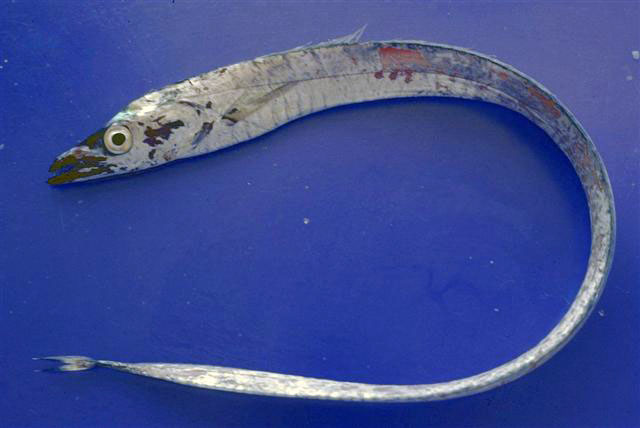| Trichiuridae (Cutlassfishes), subfamily: Lepidopodinae |
| 210 cm TL (male/unsexed); max.weight: 8,000.0 g; max. reported age: 8 years |
|
benthopelagic; marine; depth range 42 - 620 m, oceanodromous |
| Eastern Atlantic: France and western Mediterranean to Senegal, including Azores, Madeira, the Canary Islands and offshore seamounts; Cape Fria, Namibia to Agulhas Bank, South Africa including northern Walvis Ridge. Southern Indian Ocean: seamounts 30 to 35°S. Southwest Pacific: Australia (New South Wales to southern West Australia) and New Zealand. Southeast Pacific: Peru. A doubtful record from Cape San Lucas, Mexico. |
|
Dorsal soft rays (total): 98-110; Anal spines: 2-2; Anal soft rays: 59-66; Vertebrae: 105-114. Second anal-fin spine plate-like. Pyloric caeca 20 - 29. Body uniformly silvery (Ref. 6181). Pelvic fin very small (Ref. 35388). |
| Occur on continental shelf, along its edge and upper slope down to 400 m (600 m in Australia), usually over sandy and muddy bottoms from 100 to 250 m (over 300 m in Australia). Depth range from 333-620 m in the eastern Ionian Sea (Ref. 56504). Migrate into midwater at night. Form schools; occasionally found inshore in upwelling of deep water when it appears at surface. Feed on crustaceans, small squid and fish (Ref. 6768). Eggs and larvae are pelagic (Ref. 6768). |
|
Data deficient (DD); Date assessed: 19 May 2013 Ref. (130435)
|
| harmless |
Source and more info: www.fishbase.org. For personal, classroom, and other internal use only. Not for publication.

